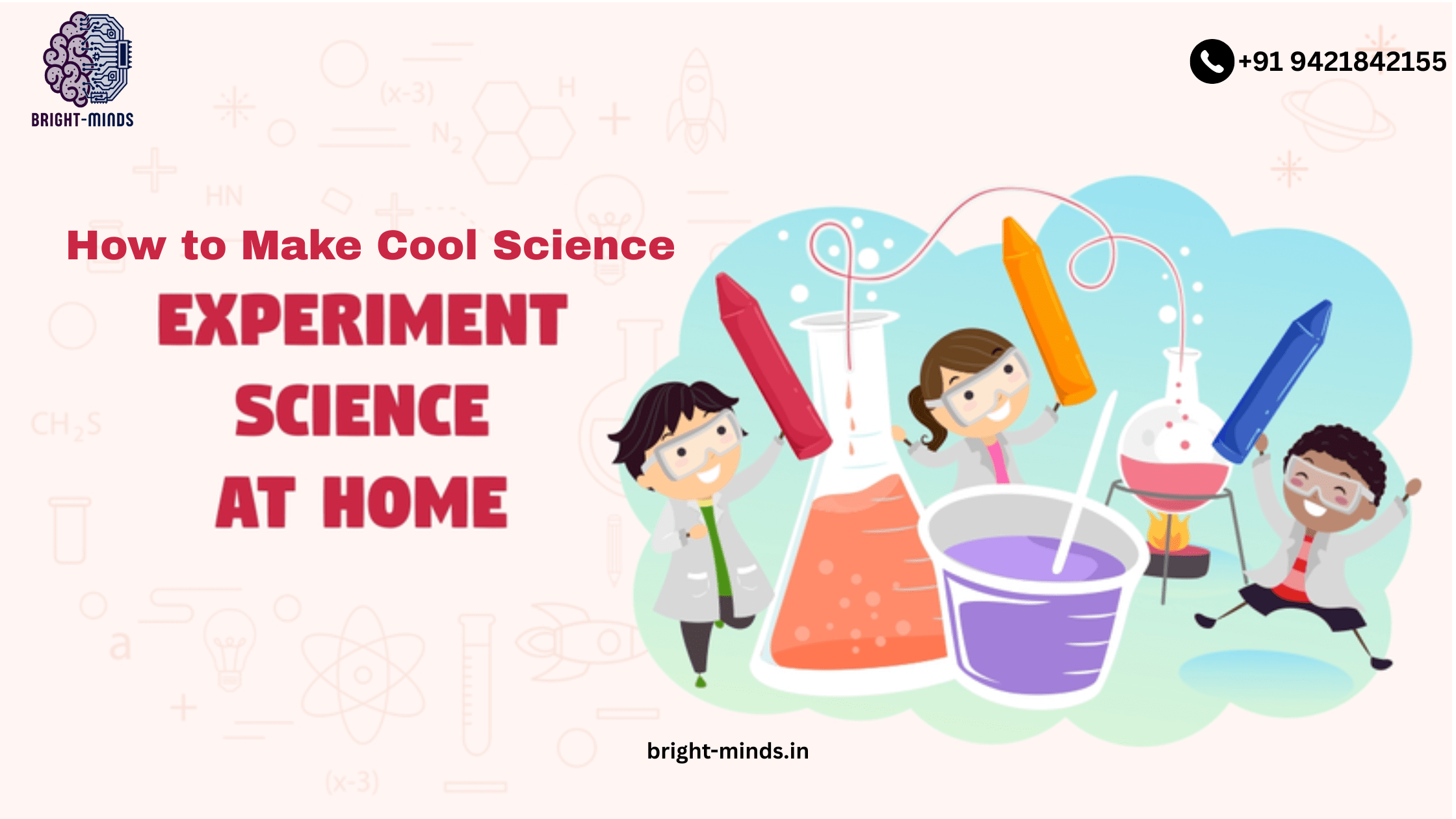We are surrounded by science, and conducting practical experiments to learn about how the world functions is enjoyable! Simple items can be used to create exciting science experiments at home if you’re a child who enjoys learning and having fun. These experiments are a terrific way to begin started, regardless of your interests in biology, chemistry, physics, or just having a little fun with science. Let’s get started with some incredible experiments that you may do at home!
1. Making a Homemade Volcano
What You’ll Need:
- Baking soda
- Vinegar
- A plastic bottle or container
- Dish soap (optional)
- Food coloring (optional)
- A tray or large plate to catch the overflow
How to Do It:
- Place your plastic bottle or container in the middle of a tray or plate.
- Fill the bottle about halfway with baking soda.
- Add a few drops of dish soap for some foamy fun (optional).
- Pour in a little food coloring to make the eruption colorful (optional).
- Now, pour vinegar into the bottle and watch as the “lava” erupts!
What’s Happening? The reaction between baking soda (a base) and vinegar (an acid) creates carbon dioxide gas, causing the mixture to bubble and fizz, just like a real volcano!
2. DIY Lava Lamp
What You’ll Need:
- A clear plastic bottle
- Vegetable oil
- Water
- Food coloring
- Alka-Seltzer tablets
How to Do It:
- Fill the bottle about three-quarters full with vegetable oil.
- Add water to fill the rest of the bottle, but leave a little space at the top.
- Add a few drops of food coloring.
- Break an Alka-Seltzer tablet into a few pieces and drop them into the bottle one at a time.
- Watch the colorful blobs of bubbles rise and fall inside the bottle!
What’s Happening? The oil and water don’t mix because they have different densities. When you drop the Alka-Seltzer, it creates carbon dioxide gas that bubbles up through the liquid, creating the cool lava lamp effect!
3. Rainbow in a Jar
What You’ll Need:
- A tall, clear glass jar
- Honey
- Dish soap
- Water
- Vegetable oil
- Rubbing alcohol
- Food coloring
How to Do It:
- Carefully pour each liquid into the jar in layers, starting with the heaviest liquid (honey) and working your way up to the lightest (rubbing alcohol).
- You can add food coloring to each layer to create different colors, such as blue for water, green for dish soap, and so on.
- Pour each liquid slowly to make sure it doesn’t mix with the one below it.
- Observe the rainbow of colors created by the different densities of the liquids!
What’s Happening? Each liquid has a different density, which is why they don’t mix and instead form colorful layers in the jar.
4. The Classic Baking Soda and Vinegar Balloon Experiment
What You’ll Need:
- A balloon
- A bottle or jar
- Baking soda
- Vinegar
- A funnel (optional)
How to Do It:
- Pour some vinegar into the bottle or jar.
- Using a funnel, pour a few spoonfuls of baking soda into the balloon.
- Carefully attach the balloon to the bottle’s opening without letting the baking soda fall in yet.
- Once the balloon is securely attached, lift the balloon and let the baking soda fall into the vinegar.
- Watch the balloon inflate as gas is released!
What’s Happening? The reaction between the baking soda and vinegar produces carbon dioxide gas, which inflates the balloon. This experiment shows how chemical reactions can create gases!
5. Invisible Ink with Lemon Juice
What You’ll Need:
- Lemon juice
- Cotton swabs
- White paper
- A lamp or light bulb (or a hairdryer)
How to Do It:
- Dip a cotton swab into the lemon juice.
- Use the cotton swab to write a secret message or draw a picture on the white paper.
- Let the paper dry completely.
- To reveal your secret message, hold the paper near a warm light bulb or heat it with a hairdryer.
What’s Happening? Lemon juice contains a chemical that is colorless when dry. When you heat the paper, the lemon juice oxidizes and turns brown, revealing your hidden message!
6. Floating Egg Experiment
What You’ll Need:
- A glass or jar
- Water
- Salt
- An egg
How to Do It:
- Fill the glass or jar with water.
- Carefully place the egg in the water and observe what happens. The egg will sink to the bottom.
- Gradually add salt to the water and stir.
- After adding enough salt, try placing the egg back into the water. This time, the egg should float!
What’s Happening? Saltwater is denser than regular water. By adding salt, you make the water denser, which helps the egg float!
Tips for Safe and Fun Science Experiments:
- When conducting experiments, always have an adult present, particularly if you’re handling substances like heat, vinegar, or rubbing alcohol.
- To keep your workspace neat and safe, make sure to clean up your supplies after using them.
- Trying out various amounts or components can produce intriguing new outcomes!
Conclusion:
Curiosity, experimenting, and discovery are at the heart of science! You may enjoy science without expensive lab equipment. You can do these entertaining and instructive experiments that will leave you in awe of how the world functions with basic materials you can find around the house. So gather your materials, use your imagination, and begin experimenting right now!
You might be like this:-
Science Quiz Questions and Answers for Kids
Mind-Blowing Science Facts for Kids – Fun and Surprising Science Facts!

